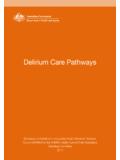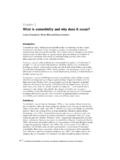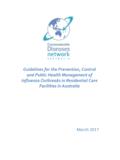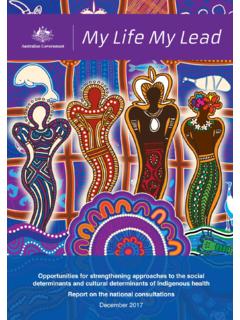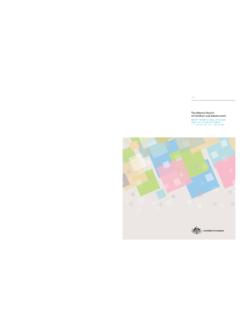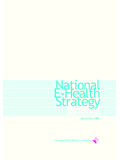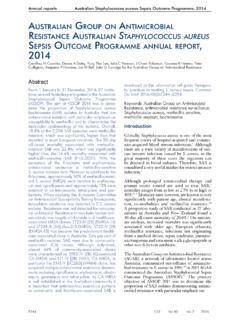Transcription of Changes to the NDSS - Welcome to the …
1 FAQ Changes to the ndss Access Points - Page 1 of 10 FREQUENTLY ASKED QUESTIONS For Community Pharmacy Access Points Changes to the ndss Q. What are the Changes to the ndss from 1 July 2016? ndss products are now only available through community pharmacies that are ndss Access Points. These products will be supplied through the pharmaceutical wholesaler distribution network, the same network that supplies PBS medicines, at no cost to the pharmacy. Access Points are eligible to receive a payment of $ for each ndss product supplied from 1 July 2016. These products include blood glucose test strips, urine test strips, needles, syringes and insulin pump consumables (IPCs). In addition, restrictions to accessing blood glucose test strips on the ndss for registrants with type 2 diabetes who are not using insulin came into effect on 1 July 2016.
2 Advice Q. Why have the supply Changes happened? The Changes provide more efficient distribution of ndss products, as they are now supplied through the existing PBS medicine supply network. Q. What is the role of Diabetes Australia in administering the ndss ? The new ndss Agreement with Diabetes Australia came into effect on 1 July 2016. Diabetes Australia continues to assist in the administration of the ndss , and there are no Changes to the support and education services provided by Diabetes Australia. Diabetes Australia continues to register people with diabetes to the Scheme, provide education and support for registrants and Access Points, maintain the ndss database and systems, and manage payments to Access Points and the collection of ndss Registrant co-payments. Q. Will registrants still be able to access the ndss telephone service?
3 Yes. Access to the ndss Helpline 1300 136 588 has not changed. Registrants and pharmacy staff can still get advice about diabetes products over the phone through Diabetes Australia. However, registrants can no longer order ndss products over the phone, through Diabetes Australia shops or Diabetes Australia agent websites. FAQ Changes to the ndss Access Points - Page 2 of 10 Q. Do Access Points require a new Access Point Agreement from 1 July 2016? New Access Point Agreements are currently being established between the Commonwealth and individual Access Points, and will be managed by Diabetes Australia. Extensions of previous agreements have been put in place while new arrangements are being finalised. Q. How does my pharmacy become an ndss Access Point? To enquire about becoming an ndss Access Point, contact the ndss Helpline on 1300 136 588 in the first instance.
4 However, new pharmacy Access Point applications will not be progressed until finalisation of the New Access Point Agreement. Q. Has the price of ndss products changed? There are no Changes to price or range of ndss products, or the co-payment a registrant pays for products. If home delivery is required, Access Points may choose to charge delivery costs. Ordering Q. Are registrants able to order ndss diabetes products online? No. Registrants are no longer able to order ndss products online or over the phone from Diabetes Australia, and state and territory diabetes organisations. Registrants will need to order and collect products from their local ndss community pharmacy Access Point. If a registrant lives a long distance from the pharmacy it may be useful to discuss setting up regular ordering of their products so that they are available when they next visit the pharmacy.
5 Some registrants will request less common ndss items which you may not routinely stock. In these instances, it is best to discuss the person s requirements and discuss options for ensuring stock availability based on their needs. Similarly, some registrants may wish to purchase larger quantities of ndss products (for example to meet their higher than normal monthly needs) and these needs should be discussed to ensure that sufficient quantities are available from the pharmacy. FAQ Changes to the ndss Access Points - Page 3 of 10 While registrants can order larger quantities as required, there are limits to the number of products that may be purchased through the ndss in a 180 day period. These limits are: 900 strips and/or 1200 sharps or 90 cannulae and/or 90 reservoirs/cartridges Blood Glucose Test Strips Q: What are the new restrictions for accessing blood glucose test strips (BGTS)?
6 Note: These restrictions do not apply to ndss registrants who use insulin, have gestational diabetes, or have a rare form of diabetes. Since 1 July 2016, all registrants with type 2 diabetes not using insulin are eligible for an initial six month supply of subsidised blood glucose test strips. This means that they can purchase blood glucose test strips, as required, over a six month period. This change follows the independent advice of the expert Pharmaceutical Benefits Advisory Committee. The six month access period commences from the date that blood glucose test strips are first purchased on or after 1 July 2016. The ndss Connect software will automatically calculate this period. After six months, the ndss system will prompt that the registrant is no longer eligible to receive subsidised test strips, and these registrants should be directed to speak to their health professional.
7 Importantly, if a person needs access to subsidised blood glucose test strips for clinical reasons, they will continue to receive access after the required form is completed and signed by an authorised health professional. Q: Why have the restrictions on blood glucose test strips been introduced? A review of products used in the management of diabetes found that there is limited evidence that self-monitoring of blood glucose improves blood glucose control, quality of life or long-term complications in people with type 2 diabetes who are not using insulin. As a result, the Pharmaceutical Benefits Advisory Committee recommended more targeted access to test strips for people with type 2 diabetes to ensure that patients are using the most appropriate products. The outcomes of the Review are available on the PBS website.
8 Q. How do registrants access more blood glucose test strips after six months? Registrants who have a clinical need for blood glucose test strips will need a signed form from a medical doctor, credentialed diabetes educator or nurse practitioner for subsidised blood glucose test strips after the initial six months. Ideally this extension to access should be sought before the six month period expires. FAQ Changes to the ndss Access Points - Page 4 of 10 Ongoing access is based on the clinical judgement of the health professional as to whether the patient benefits from additional monitoring, for example The person is taking a medicine which may adversely affect glycaemic control sulfonylureas; The person has an illness in addition to diabetes that may adversely affect glycaemic control; The person s diabetes is inadequately controlled; There is a clinical need for the person to self-monitor their blood glucose level; or There has been a change to the person s existing diabetes management within the previous three (3) months.
9 There is no limit on the number of six month extensions to access that can be authorised. Q. Who are the authorised health professionals that can approve additional access to blood glucose test strips? Authorised health professionals include medical practitioners, nurse practitioners and credentialed diabetes educators. Q. Is there a form a medical doctor or authorised health professional needs to fill out for people to access blood glucose test strips? Yes. A completed and signed Blood Glucose Test Strip Six Month Approval Form from a doctor or authorised health professional is required for subsidised blood glucose test strips after the initial six months. The form is available from the ndss website at The initial six month supply of subsidised test strips starts from the first time a registrant buys products on or after 1 July 2016.
10 An access form is not required for the initial supply. For example, if a registrant buys ndss products in May 2016 and then again in August 2016, the six month supply limit will be from the date of their August supply as this was after July 1. Q: What do pharmacy staff do with the authorisation form? If a registrant is granted an additional six months access, they will need to bring the completed authorisation form to the pharmacy. Pharmacy staff will need to check that the form is completed and signed and update the relevant details on ndss Connect following the prompts. The system will automatically calculate the new six month period based on these details. It is important to note that extended access cannot be provided retrospectively and six month access periods are continuous and cannot be accessed in segments. FAQ Changes to the ndss Access Points - Page 5 of 10 Q: How is the access period worked out?

